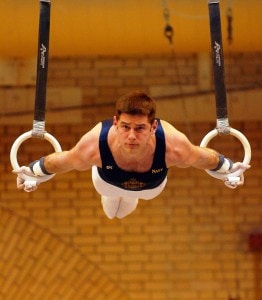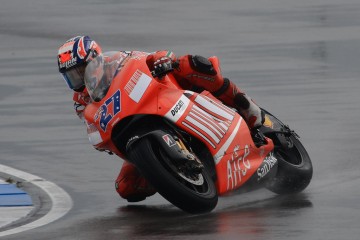Sports photography is one of the most difficult photographic disciplines for an amateur photographer, even representing a great challenge for an expert photographer. We have all tried to carry out a photo session in a stadium or sports center at some time and have left frustrated after seeing how almost all our photos have come out blurry, moved or out of focus. A disaster.
Below I propose a series of tips and tricks with which you can improve your technique and get sports photos with a decent level .
TIP 1: USE LONG FOCAL LENGTH LENSES

It's hard to get good sports photography without a good specialized lens. These objectives tend to have a slightly high price, everything must be said, but if you plan to dedicate yourself to this frequently, I recommend that you invest a little bit of money in one of these objectives, it will be worth it and you will notice a lot of the difference.
Here we need what is called a telephoto lens with a long focal length , you will need something over 200mm minimum . If you can reach 300mm better. And if it can be more, even better.
These long focal lengths allow you, from the comfort of the bleachers or bench or wherever you are sitting, to “chasing” your subject effortlessly. You will be able to zoom as much as you need and you will not feel the limitation of the usual 18-55mm lens.
TIP 2: LIGHT, LIGHT, LOTS OF LIGHT
In the search for that ideal objective, he also tries to have as generous a diaphragm opening as possible . A large aperture will let in more light and help you get more sharpness. Remember that the larger the aperture of a lens, the smaller the f/ value of the lens will be. For example, an f/2.8 lens has a much larger aperture than an f/3.5 lens where it is smaller, and so…
Let me warn you that the size of the aperture makes lenses much more expensive, so be careful with this point, Evaluate the investment, assess the frequency with which you will take these types of photos, and make a decision.
TIP 3: NO STABILIZER
Normally at long focal lengths (100, 200mm) the photo tends to come out blurry and shaky. The explanation behind that is very complicated for the case, but you should know that in this type of focal lengths that are used for sports photography, the lens should be equipped with an image stabilizer .
The image stabilizer is a button or function that helps to make the photo less blurred. It doesn't always eliminate vibration, but at least it helps to avoid it.
At Nikon this function is called VR and you will find it on the lens. In Canon it is called IS.
If your SLR is a Sony or Pentax camera, it most likely has an image stabilizer already built into the camera body.
TIP 4: MANUAL OR SEMI-MANUAL

By default, your SLR camera offers you a preset mode for sports. Use it, it is a good alternative especially for times when you do not have much time, when you have to take few photos quickly, or times when you are not interested in the beauty of the photo but rather document the event with correct photos and sharp. Something to get out of the way we go.
However, if you want to go a step further, be able to have a little more control over the photos, improve your technique and add a little more creativity to your photos, I recommend that you use the Manual mode of your camera .
With the manual mode you can control both the shutter speed and the aperture of the diaphragm. It's a hard mode at first but I find it the most suitable.
If you feel a bit insecure with Full Manual mode, I suggest you use at least one of your camera's semi-manual modes: shutter speed (S, Tv) or aperture priority (A, Av).
TIP 5: FAST, ALWAYS FAST
In photography if you want to freeze the moment and get sharp photos you have to use fast shooting speeds . It's the thing about sports, everyone moves fast and if you don't use fast shutter speeds you risk getting shaky and blurry photos.
My advice is that in sports never shoot below speeds of 1/300s.
TIP 6: HIGH ISO, BUT CAREFULLY
Following my previous advice to shoot very fast, depending on the light conditions and the type of lens you use, it is possible that the photos will come out dark. In that case, you can tinker a bit with the ISO sensitivity of your camera, but do it very carefully, since the higher the ISO sensitivity, the more noise (grains) will appear in the photo. Try ISO 200, try ISO 400, and so on, until you get to a value where the photo is bright enough but without that damn noise that spoils the photo.

TIP 7: AUTOFOCUS
If in a game or competition you try to take photos in manual focus mode you can go crazy. I recommend that you use the autofocus of your camera , since it is fast, autonomous and most of the time it is correct.
TIP 8: SHOOT IN BURST MODE
If you mess around a bit in your camera menu you will find something called “Shooting Modes” , set it to “Burst Shot” mode , so you can take 3, 4 or 5 pictures in a row each time you press the shutter button. This way you make sure that of the 3 or 5 photos you will surely get a decent one.
TIP 9: PHOTOGRAPHING SPORTS IS ITSELF A SPORT TOO
In a sports photography session, shooting everything from the same point of view ends up getting boring. All the photos will come out the same and you will also end up getting frustrated at times seeing how some players cover up the main subject you are trying to photograph.
Instead of that better move from time to time and change perspective . If you have that facility, get closer to the players and shoot up close, then try 18mm panoramic shots, for example, and so on. Go changing position and you will see how no photo will be similar to another. Move constantly and stay in each place for 5-10 minutes, before changing perspective again.
If you combine these tips with a pinch of creativity you can get impressive photos. Remember that you always have to be creative, capture scenes from new angles, for example shooting from the ground, or from an infrequent corner. You will see what results you will get.


